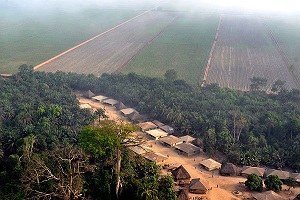At first sight, the discussion was quite adequate at the meeting ‘A sustainable bioeconomy in 2030: are we on the right track?’. Organised by the Dutch Commission on Biomass Sustainability Issues, usually called Corbey commission after its chairwoman. But beneath the surface, there are still two bioeconomies, two radically different views on the future of biomass, each with its own concepts and definitions. Dorette Corbey has not yet merged them into one.

Twice the bioeconomy
In world no.1, dominant in the commission until quite recently, the main catchwords are reduction of CO2 emissions and lower dependency on fossil fuels. This implies that it is all about the energy sector and policies to enlarge the share of biomass in energy supply. In world no.2, green chemistry is the main issue, with its prospect of successful (hence commercial) processing of biomass to a whole range of products; primarily chemicals and materials but also biofuels. This world too, will lead to reduced CO2 emissions and a lower dependency on fossil fuels, but these are not its primary goals.

Twice biomass and the bioeconomy, but in completely different mind-sets. In world no.1, biomass potential is a central issue, because energy requires major quantities: if we could not be sure of a sufficient potential of sustainable biomass, we might better not venture into large-scale energy production from biomass at all. This focus will automatically lead to the overriding importance of imports, entailing issues like ILUC (land use change, particularly in exporting countries), land grabbing (acquisition of large surfaces in developing countries) and the rights of indigenous peoples to their land. Issues that are far removed from the commercial potential of the extra European sugar production and its processing, an issue (no, an opportunity) in world no.2. Only in a few issues, both worlds meet, e.g. in the case of cane sugar or palm oil – both an important food and a major feedstock for the production of biofuels; and both produced at the rims of the tropical rain forest, entailing the danger of the large-scale clearing of natural areas.

Is CO2 the ultimate criterion?
Although it could do better, the Corbey commission has certainly moved a bit from world no.1 to world no.2, as from 2011 onwards its mandate was extended to the use of biomass for chemicals and materials. But in the rank and file, this move is slower. Many speakers equalled biomass to wood; obviously having energy in mind. But the interesting thing about biomass is that it is a natural, very versatile resource, from which we produce both cosmetics and fodder, both neutraceuticals and bioplastics. And indeed, biofuels as well. Being a staunch supporter of world no.2, it is beyond me that one can discuss the bioeconomy for a whole afternoon without even mentioning the prospect of investments to the billions in the sugar-based chemical industry; and without reference to major existing bioeconomy sectors like the paper and pulp industry. And what about the millions of tons of potato starch that are produced for industrial use each year in the Northern parts of Germany and the Netherlands, would they belong to the bioeconomy?
For the proponents of world no.1, the climate issue outweighs all other problems; all policies are measured against the amount of CO2 emissions they reduce. Frankly, commercial issues come in second place. But because CO2 is deemed so important, proponents of this view allow themselves to be trapped in hopeless projects like co-firing of wood chips in coal-fired power stations. An activity that requires a lot of government subsidy to sustain, that hardly results in any innovation, and that leaves us (the suppliers of the subsidies) empty-handed when the bonanza is over. This is not the bioeconomy, this is the subsidised biosector. If I might be allowed to give one piece of advice to the Corbey commission, it would be this: the bioeconomy has no future if it has to be based on permanent subsidies. It would be wise to look a bit harder at projects and sectors in which the dearly wanted reduction of CO2 emissions would go hand in hand with commercial perspectives. Then, the commission would not have to formulate each and every of its ten draft conclusions with government in mind as the active party. And then, the bioeconomy could thrive.
